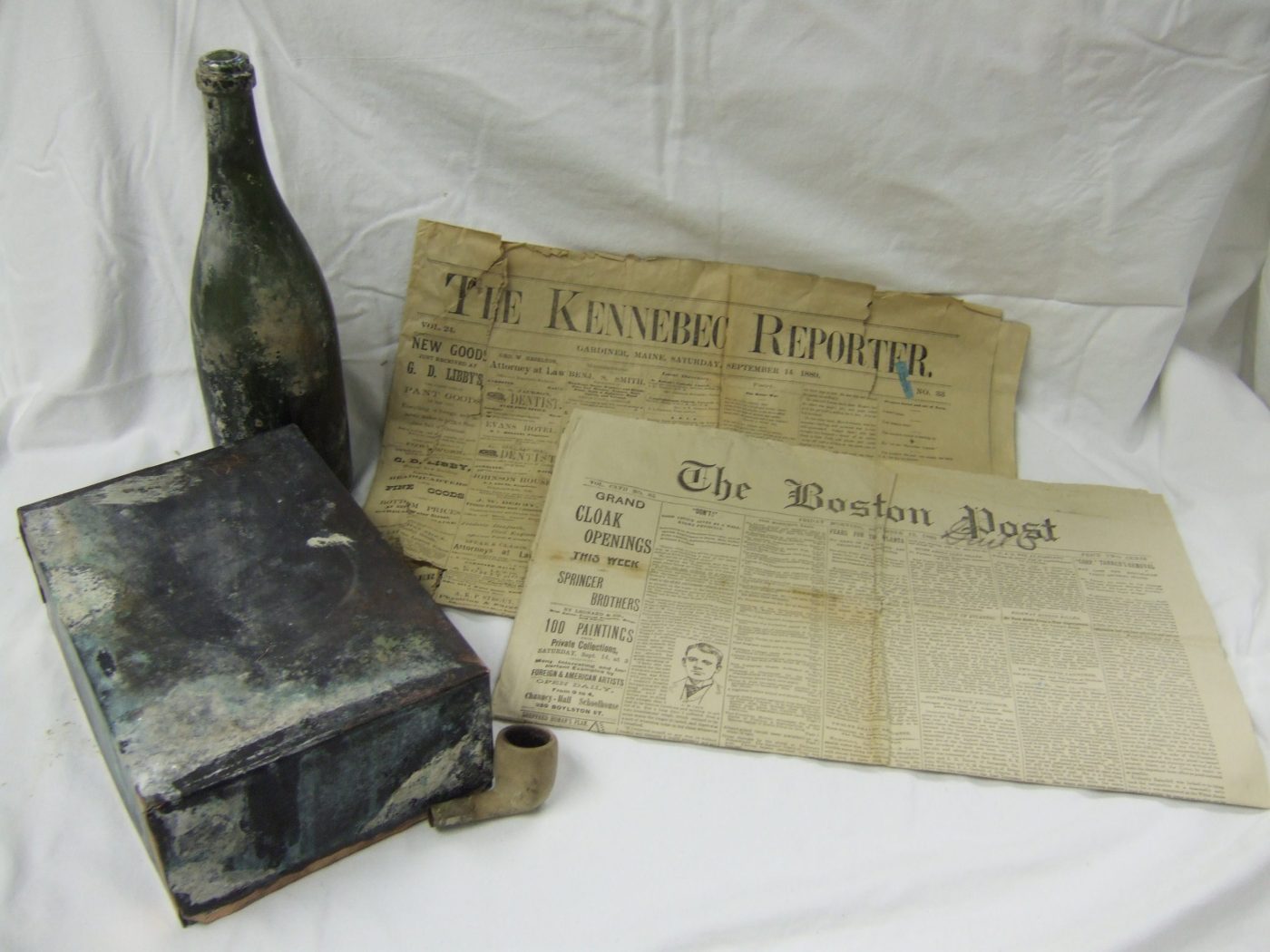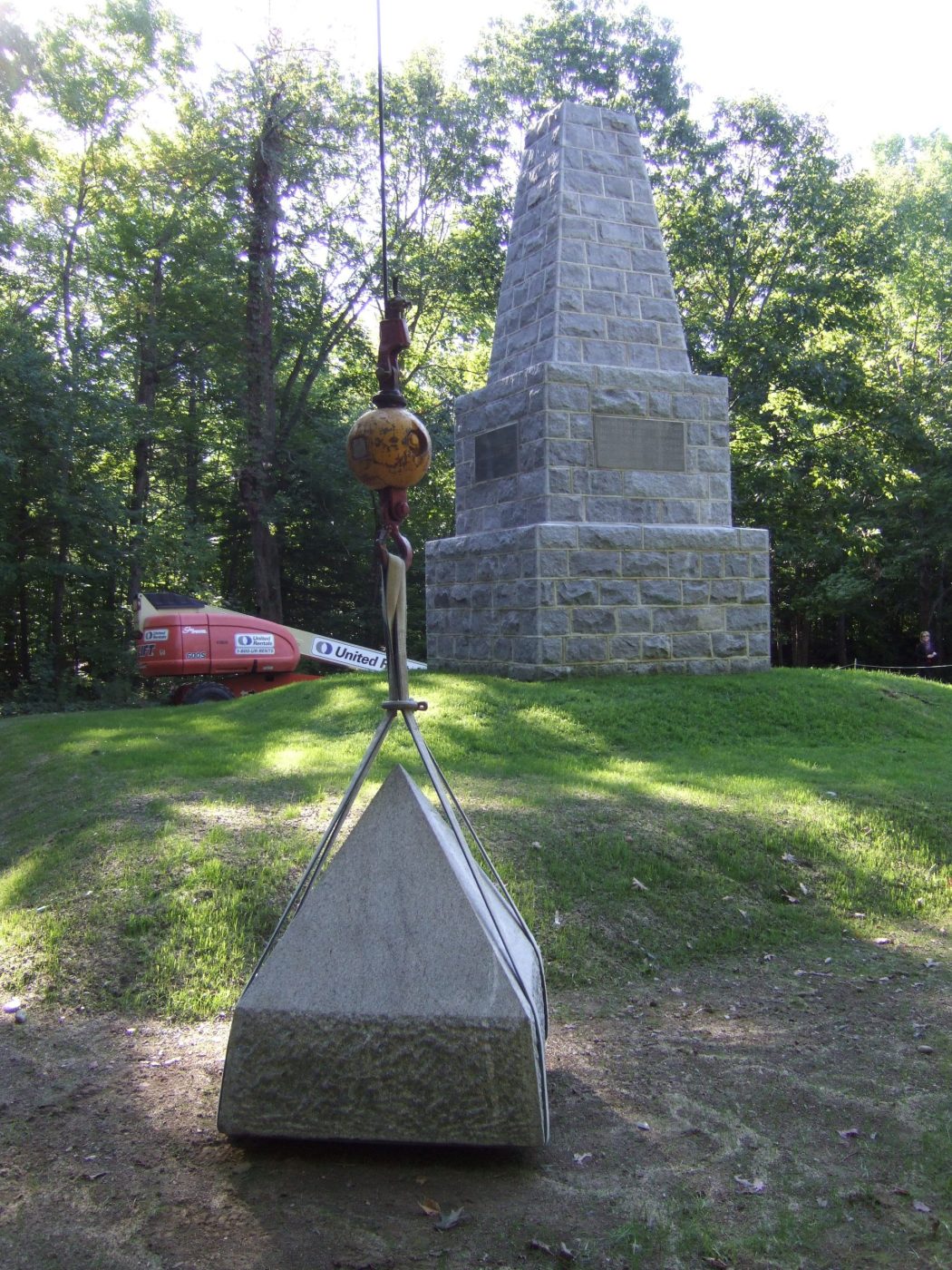
A time capsule filled with objects and historical materials provides a snapshot of a particular time and place. Buried within a building or memorial as it is constructed, the contents of the container offer a tangible connection between past and present. The National Cemetery Administration (NCA) has documentation on the time capsules that were occasionally imbedded in national cemetery monuments. In 2010, however, masons working on the Soldiers and Sailors Monument at Togus National Cemetery, Maine, unexpectedly discovered one.
All cemeteries—designated as national cemeteries in 1973—affiliated with the eleven oldest branches of the National Home for Disabled Volunteer Soldiers (NHDVS) feature a prominent monument, typically in the shape of an obelisk, erected several years after the Civil War. The cemetery at the Eastern Branch-NHDVS in Togus lacked such a memorial, to the distress of Luther Stephenson, governor of the branch. About 2,000 Veterans resided at the home. A group of them took matters into their own hands and erected a 26-foot-tall granite-block obelisk in 1889. They built it using stone quarried on the grounds. The 1890 National Home annual report commended the outcome: “The monument is very handsome in its rough simplicity, and is a source of pride to the men.” What went unreported was that the builders placed a time capsule inside.
The copper box, measuring 10”x 7”x 3”, was found to contain regional newspapers, National Home annual reports, and photographs. Despite the soldered lead seams, water had infiltrated the box and much of the contents were unsalvageable. To the delight of NCA historians who examined the container, however, seven members of the National Home’s engineering office had proudly autographed the box’s paper lining with their names and information about their military service. Most had served in Civil War regiments from Maine, Massachusetts, New Hampshire, and New York.

Also found within the monument were a green glass bottle with a rolled letter inside and the bowl of a smoking pipe. The National Cemetery Administration rededicated the Soldiers and Sailors Monument on September 15, 2010. Then-Under Secretary for Memorial Affairs Steve Muro used the ceremony to place a new time capsule under the capstone for future generations to uncover. This watertight container is an ammo box that NCA historians painted “VA blue” and filled with newspapers, challenge coins, brochures about VA and NCA, and letters from VA leadership.
By Sara Amy Leach
Senior Historian, National Cemetery Administration
Share this story
Related Stories

History of VA in 100 Objects
Object 96: Postcard of Veterans Vocational School
In 1918, the government created the first nationwide vocational training system to help disabled Veterans acquire new occupational skills and find meaningful work. Over the next 10 years, more than 100,000 Veterans completed training programs in every field from agriculture and manufacturing to business and photography.

History of VA in 100 Objects
Object 95: 1840 Census of Pensioners
In a first, the 1840 census collected data on Veterans and widows receiving a pension from the federal government. The government published its findings in a stand-alone volume titled “A Census of Pensioners for Revolutionary or Military Services.”

History of VA in 100 Objects
Object 94: Southern Branch of the National Home
The Southern Branch of the National Home for Disabled Volunteer Soldiers opened in Hampton, Virginia, in late 1870. The circumstances surrounding the purchase of the property, however, prompted an investigation into the first president of the National Home’s Board of Managers, Benjamin Butler.


